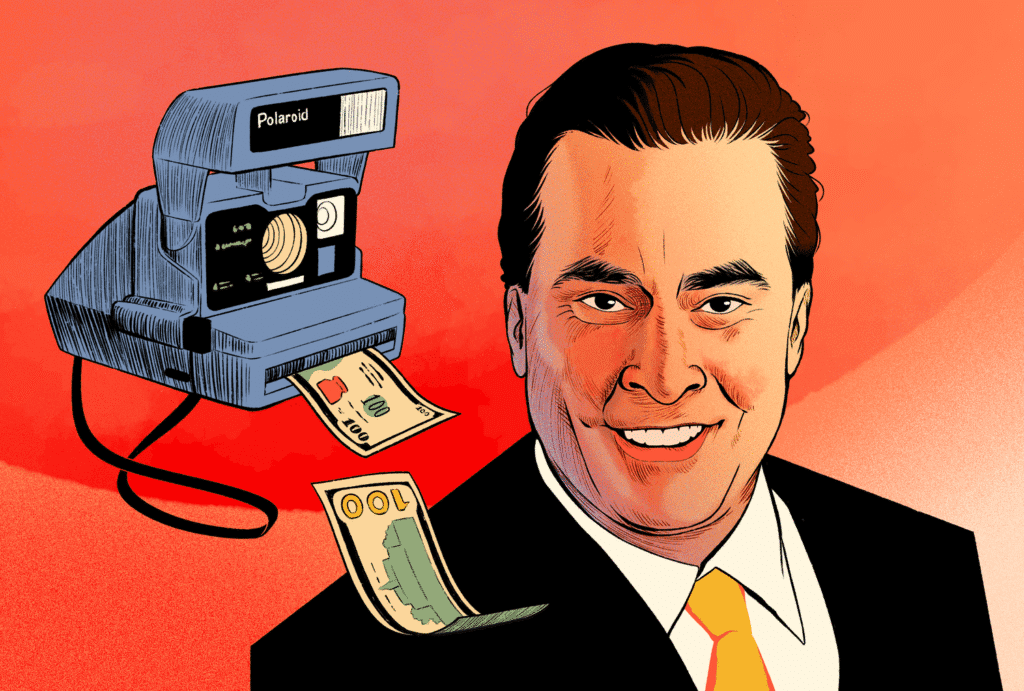In September 2008, as the market wobbled amid the growth of the financial crisis, dozens of FBI agents flocked to the Minneapolis headquarters (PCI) of Petters Company Inc. (PCI), a calm office park with well-maintained ponds and early autumn leaves.
“My first thought was ‘Oh, birthday cup strip grams,'” recalled one employee. He recalls that FBI Best’s “looking like Vin Diesel” quickly realised something more serious as she and other employees were directed at cafeterias where they collected cell phones as evidence. Behind the iconic brand Tom Petter empire, including Polaroids, yacht fleets, vast mansions and celebrity fundraisers, one of the bravest scams in history.
Below, I’ve shown you how he got away.
Key takeout
Petter has adjusted the $3.7 billion Ponzi scheme using forged documents and empty warehouses to convince investors to fund electronics transactions that are not present. His 50-year prison sentence came after his fraud lost billions in his plans after he collapsed legal companies and bankrupt hedge funds.
Scheme: Fake paperwork and empty warehouse
For more than a decade, Petters has been convinced that he has spent his money on investors buying large quantities of home appliances to resell to major retailers such as Costco Wholesale Corporation (Cost) and Walmart (WMT). In exchange he gave them a promise note that would provide a very consistent return of 15% to 25% within the month. Estimated business model: Buy discounted items and sell them with markup before sharing profits.
But that wasn’t true. There was no TV, stereo or DVD player. There are no warehouse workers to unload pallets of electronic devices. No trucks have been delivered to Costco warehouse docks. Instead, Petter and his conspirators produced purchase orders, maintained empty warehouses for inspection, and washed billions through the shell company.
The scheme contained several important elements.
Empty Warehouse: Petter mostly maintained barren warehouses in the three states, making it seem like they have appropriate facilities for insurance companies and investors. The wrong direction of PCI was not particularly clever. When PCIVP Deanna Coleman accidentally sent an insurance inspector to the wrong warehouse, the leading co-conspirator, Larry Reynolds, claimed that all the items had just been shipped.
Witness Protection Accomplice: Reynolds was actually Larry Lesservitz, a denied lawyer, a marijuana trafficker, a black marketer, and a convicted con artist who joined the federal Witness Protection Program in the 1980s.
The legitimate side: Acquiring a well-known brand like Polaroid for $426 million ($714 million in 2025) offered both cover and reliability, placing Petter as a conversion expert.
Money flow: The scam lasted much longer, but between 2003 and 2008, roughly $12 billion drove Reynolds and Petters shell companies into PCI accounts, with bank records showing no vendor revenue. Cash flowed downstream only to PCI.
Calm Payments: The Ponzi scheme, in which new investors offer returns to previous generation investors, makes these payments essential to maintain the false impression that everything is on the board.
Red flag: Amazing near miss
Over the course of 20 years, Petters’ fraud life survived many close calls.
Colorado Criminal Complaints: The 1980s fraud and identity theft allegations were hidden behind sealed records. Crime whistleblower: Petters’ Associate Lichard Hettler’s lawsuit alleges that Petters’ collateral does not exist due to Hettler’s criminal history. Due diligence was shaken off. In 2004, investigators discovered that Petter’s educational qualifications were manufactured, and 15 lawsuits against Petter included a check kitting claim. However, the investigator’s clients invested anyway and were seduced by the promised returns. Desktop Spy Revelation: Fund Manager discovered on Google Earth that the bill’s address simply quietly walked away instead of warning authorities. Costco’s confirmation was ignored: After GE Capital verified with Costco that no PCI orders existed (contradicting Petter’s claim), he inexplicably continued to fund him.
Understanding: Betrayal of an ex-love
By the summer of 2008, the credit market had discovered that while losing millions of gambling in Bellio Las Vegas, it had made fresh investors impossible, even if Petter desperately offered a 361% interest rate.
The end was portrayed in vision after Coleman, an ex-girlfriend whom he broke up with two years ago, walked to the FBI office in Minneapolis, confessing to billions of people over fraud, and documenting two weeks of terrible conversation with Petter.
Fallout was fatal for some businesses. Sun Country Airlines and Polaroid went bankrupt, and hedge funds like Lancelot Investment Management (a $2.62 billion loss, $4 billion in $2025) have completely collapsed.
In December 2009, the ju apprenticed Petter guilty of all 20 count wire fraud, mail fraud, money laundering and conspiracy. “Every day, I am filled with pain and anguish in every life that has been destroyed,” Petters told the US District Court in St. Paul, who continues to maintain his innocence, but before receiving a 50-year sentence.
Legacy: Lessons from Due Diligence
The collapse of Petters’ plans led to many actions by the Securities and Exchange Commission.
Acorn Capital Management’s “due diligence” was equivalent to comparing documents provided by Petters himself, rather than seeking independent verification. Even when German banks flagged irregularities intended to protect their investments, fund manager Maron Kuhn hid these issues from their clients.
Other fund managers falsely insisted robust safeguards while secretly arranging fake note exchanges to hide the inability to pay Petter.
Meanwhile, Gregory Bell of Lancelot Investment Management argued for a verification process that did not exist while hiding Petters’ previous fraud convictions.
Where are they now?
Now in the 70s, Petters is sentenced to 50 years in the US prison in Leavenworth, Kansas. He will be 94 years old at the scheduled release.
Coleman served only a year in prison, where confessions and cooperation helped him defeat the plan. Reynolds was sentenced to 10 years in prison.
Conclusion
What makes the Petters scheme noteworthy is not just a multi-billion dollar scale, but almost comically questionable elements. A key partner in the witness protection program, it returns reliable and robust and consistent.
A permanent lesson? An extraordinary financial claim requires extraordinary evidence.
